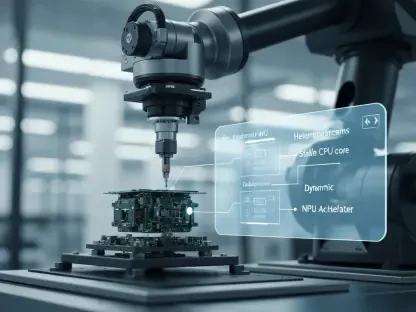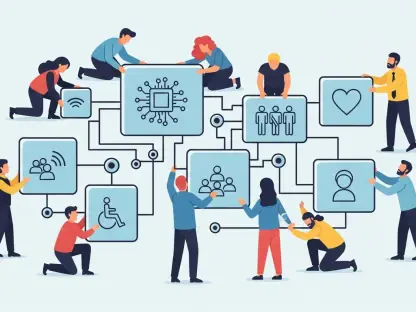What happens when artificial intelligence faces a problem it wasn’t trained to solve, like diagnosing a rare medical condition or optimizing a disrupted supply chain? In a world increasingly reliant on AI, this gap in reasoning ability could mean the difference between success and failure. At MIT, a team of researchers has developed a game-changing approach called test-time training, enabling large language models (LLMs) to adapt and learn on the spot. This innovation is poised to transform how AI tackles complex challenges, offering a glimpse into a future where machines think more like humans.
Why AI Reasoning Is the Next Frontier
The stakes for AI performance have never been higher. In critical fields such as healthcare and logistics, systems must navigate intricate scenarios—think of a doctor using AI to interpret conflicting patient data or a company rerouting shipments during a global crisis. While current LLMs can handle routine tasks with ease, they often stumble when deeper logical deduction is required, limiting their reliability in dynamic environments.
This shortfall isn’t just a technical glitch; it’s a barrier to progress. Industries are demanding AI that doesn’t just follow patterns but reasons through novel problems, like predicting economic shifts or detecting subtle fraud. Addressing this gap is essential to unlocking the full potential of AI as a trusted decision-making partner across diverse sectors.
Unveiling Test-Time Training: A New Era for AI
Enter test-time training, MIT’s bold solution to elevate AI adaptability. Unlike traditional in-context learning, which relies on prompts with a handful of examples to guide models, this method allows temporary updates to specific model parameters during deployment. The result is a system that learns in real time, tailoring itself to the unique demands of each task it encounters.
The impact of this approach is striking. On benchmark challenges like IQ puzzles, test-time training has delivered up to six times the accuracy of in-context learning alone. This leap forward showcases its strength in structured, logic-heavy tasks, positioning it as a vital tool for scenarios where precision matters most.
Efficiency remains a priority in this breakthrough. By employing low-rank adaptation, only a small subset of parameters gets updated, slashing computational costs. The team also enhances training data with simple tweaks, such as reversing inputs, to boost flexibility without taxing resources, ensuring the method is practical for real-world use.
Hearing from the Innovators at MIT
The significance of this development resonates in the words of lead researcher Ekin Akyürek, who emphasizes the transformative nature of test-time training. “It equips models with the ability to acquire new skills after deployment, marking a genuine learning process,” Akyürek explains. This capability sets it apart from the static limitations of most AI systems today.
Data from rigorous testing on complex datasets backs this perspective. The consensus among the MIT team is clear: while in-context learning works for simpler queries, test-time training is indispensable for high-level reasoning tasks. Yet, they remain pragmatic, noting the method’s computational demands and suggesting its use be reserved for high-value applications where a response time of a few minutes is a fair trade for superior accuracy.
This balanced view highlights a commitment to real-world impact. The researchers envision targeted deployment in critical areas, ensuring that the benefits of enhanced reasoning outweigh the operational trade-offs, paving the way for smarter AI in practice.
Real-World Applications: Where This Tech Shines
Imagine a hospital leveraging AI to analyze rare disease patterns, where every decision hinges on nuanced reasoning. Test-time training could enable the system to adapt to unfamiliar patient data on the fly, potentially saving lives. Similarly, in logistics, a model might recalibrate during a supply chain disruption, optimizing routes in ways static systems never could.
Such scenarios underscore the practical value of this innovation. In financial sectors, the technology could enhance fraud detection by reasoning through irregular transaction patterns that defy pre-trained rules. These examples illustrate how the ability to learn during deployment addresses pressing needs in high-stakes environments.
Beyond immediate applications, the ripple effects are profound. As industries adopt this approach, it could redefine standards for AI reliability, pushing systems to evolve continuously rather than remain bound by initial training, thus meeting the unpredictable demands of modern challenges.
Strategies to Harness Test-Time Training Today
For organizations eager to integrate this cutting-edge method, actionable steps emerge from MIT’s findings. First, focus on tasks demanding intricate logic, such as medical diagnostics or strategic forecasting, where the method’s strengths justify the added processing time. This selective approach maximizes impact without overextending resources.
Another key tactic is to adopt low-rank adaptation, updating only essential parameters to maintain efficiency. Enhancing datasets with minor variations also proves effective, enabling models to handle diverse inputs without heavy computational burdens. These measures ensure the technology remains viable for practical deployment.
Looking ahead, developers should explore autonomous decision-making features, allowing models to choose between test-time training and simpler methods based on task complexity. Such advancements could streamline operations, reducing human oversight and fostering AI systems that adapt independently to evolving needs.
Reflecting on a Milestone in AI Evolution
Looking back, the journey of test-time training at MIT marked a pivotal moment in AI’s development, redefining what machines could achieve in real time. The dramatic accuracy gains and strategic focus on complex reasoning tasks demonstrated a clear path toward more intelligent systems. Industries from healthcare to finance stood to benefit immensely from this leap.
The next steps became evident as challenges of computational efficiency and selective application were tackled head-on. Continued research into autonomous learning promised to further reduce barriers, ensuring AI could meet future demands with even greater agility. This milestone inspired a renewed focus on adaptability, urging stakeholders to prioritize innovation in training methods for a smarter tomorrow.









